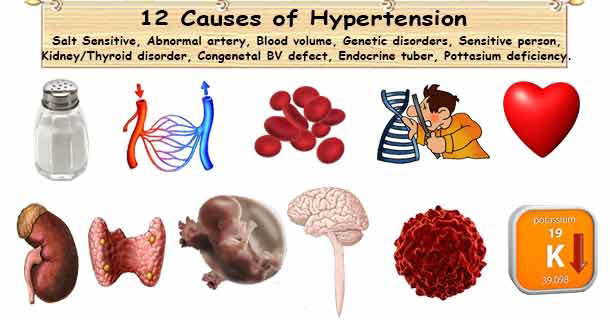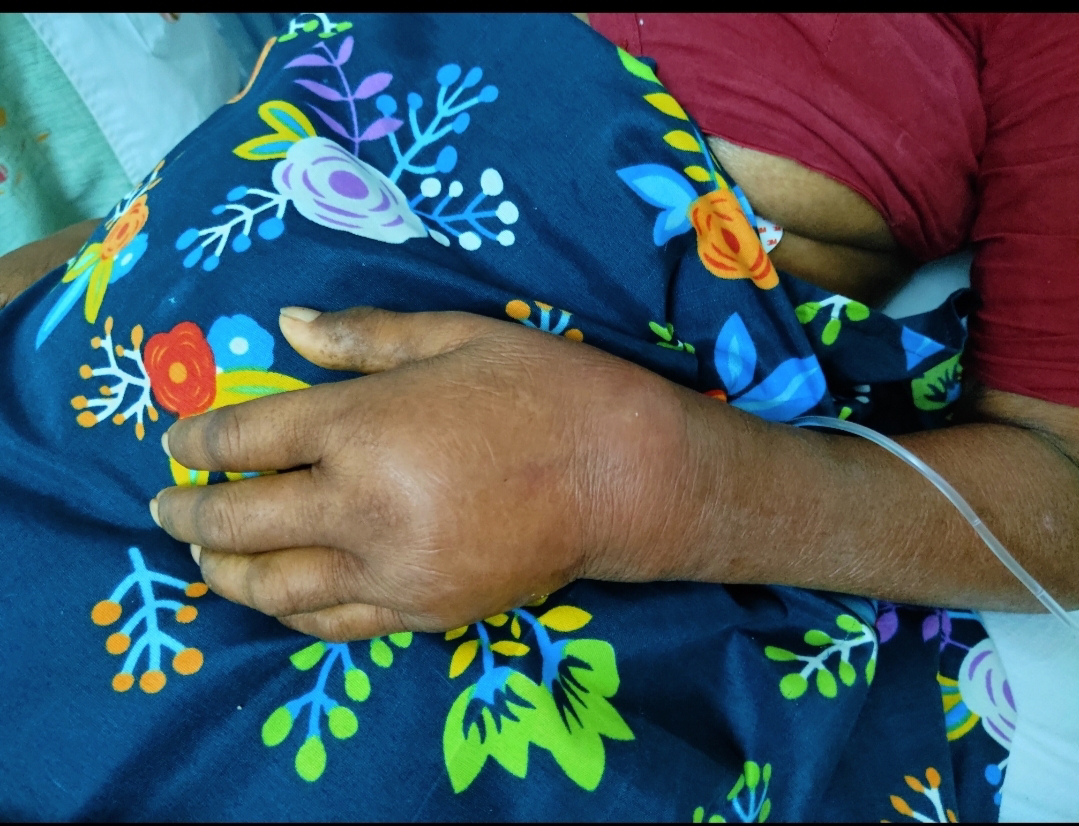assessment
55 year old man with Recurrent Focal Seizures Detailed patient case report here: http://ushaindurthi.blogspot.com/2020/11/55-year-old-male-with-complaints-of.html
1. What is the problem representation of this patient and what could be the anatomical site of
A 55 year old male construction worker with T2DM who is a chronic alcoholic and smoker came with c/o weakness of right upper limb with involuntary movements of both right UL and LL secondary to ? right temporal lobe epileptogenic focus.
2. Why are subcortical internal capsular infarcts more common that cortical infarcts?
subcortical infarcts are caused by occlusion of a penetrating arteries These arteries arise at sharp angles from major vessels .subcortical infarcts are more common than cortical infarcts.
3. What is the pathogenesis involved in cerebral infarct related seizures?
4. What is your take on the ecg? And do you agree with the treating team on starting the patient on Enoxaparin?
ST depressions noted in leads V1 to V6
NSTEMI
Yes , Enoxaparin.
5. Which AED would you prefer? If so why? Please provide studies on efficacies of each of the treatment given to this patient.
Yes.carbamazepine
And lorazepam / diazepam to prevent the conversion of focal seizure to GTCS
Antiepileptics https://pubmed.ncbi.nlm.nih.gov/28661008/
Patient details in the intern logged online case report here: http://manojkumar1008.blogspot.com/2020/12/shortness-of-breath-with-high-sugars.html
Questions:
1. What is the problem representation for this patient?
A 55 year old male with T2DM c/o exertional dyspnea and cough since 3 days and sudden onset giddiness and profuse sweating secondary to OHA induced hypoglycemia
2. What is the cause for his recurrent hypoglycemia? And how would you evaluate?
Taking too much insulin or diabetes medication.
Not eating enough
Drinking alcohol.
3. What is the cause for his Dyspnea? What is the reason for his albumin loss?
DYSPNEA:
Obesity increases dysnea because of the decrease in chest wall compliance and respiratory muscle strength.
Pulmonary function abnormalities resulting from obesity
Reduction in lung volumes,increase in pulmonary diffusion
HYPOALBUMINEMIA:
Spot protein creatinine ratio > 1 --- albuminuria secondary to ? diabetic nephropathy.
5.Do you agree with the treating team on starting the patient on antibiotics? And why? Mention the efficacies for the treatment given.
Yes .starting antibiotics as his renal parameters are deranged
Spot urine sodium is high may be secondary to ATN
3(A)
41 year old man with Polyarthralgia
Case details here: https://mahathireddybandari.blogspot.com/2020/11/41m-with-chest-pain-and-joint-pains.html?m=1
1.How would you evaluate further this patient with Polyarthralgia?
2.What is the pathogenesis involved in RA?
external trigger (eg, cigarette smoking, infection, or trauma) that sets off an autoimmune reaction, leading to synovial hypertrophy and chronic joint inflammation along with the potential for extra-articular manifestations, is theorized to occur in genetically susceptible individuals.
Synovial cell hyperplasia and endothelial cell activation are early events in the pathologic process that progresses to uncontrolled inflammation and consequent cartilage and bone destruction. Genetic factors and immune system abnormalities contribute to disease propagation.
3.What are the treatment regimens for a patient with RA and their efficacies?
3(B)
75 year old woman with post operative hepatitis following blood transfusion
Case details here: https://bandaru17jyothsna.blogspot.com/2020/11/this-is-online-e-log-book-to-discuss.html
1.What are your differentials for this patient and how would you evaluate?
-Post transfusion delayed hemolytic reaction
Evaluation:
ABO and Rh compatability
coombs testing
-Transfusion related acute hepatic
2.What would be your treatment approach? Do you agree with the treatment provided by the treating team and why? What are their efficacies?
Yes.
Lasix & Nebulization : For wheezing and crepts
Lactulose : To prevent hepatic encephalopathy https://pubmed.ncbi.nlm.nih.gov/27089005/
Zofer : For vomitings
Pantop : To prevent gastritis
4) 60 year woman with Uncontrolled sugars
1. What is the problem representation of this patient?
A 60 year old female with T2DM c/o pricking type of chest pain since 4 days and uncontrolled sugars secondary to ? right upper lobe pneumonic consolidation with sepsis
2. What are the factors contributing to her uncontrolled blood sugars?
3. What are the chest xray findings?
Plain radiograph of chest , frontal view
Trachea shifted towards right
Hyperdense area noted in the right upper lobe
pulmonary vasculature is normal
Heart is central in position
The diaphragm is normal in position
4. What do you think is the cause for her hypoalbuminaemia? How would you approach it?
Inflammation
Albuminuria
Malnutrition
Approach to hypoalbuminemia:
5.Comment on the treatment given along with each of their efficacies with supportive evidence.
Piptaz & clarithromycin : for his right upper lobe pneumonic consolidation and sepsis
Egg white & protien powder : for hypoalbuminemia
Lactulose : for constipation
Actrapid / Mixtard : for hyperglycemia
Tramadol : for pain management
Pantop : to prevent gastritis
Zofer : to prevent vomitings
5) 56 year old man with Decompensated liver disease
Case report here: https://appalaaishwaryareddy.blogspot.com/2020/11/56year-old-male-with-decompensated.html
1. What is the anatomical and pathological localization of the problem?
Liver : cirrhosis
Kidney : AKI ,Hyperkalemia
GI : portal hypertensive gastropathy
Lung : pneumonia , pleural effusion
2. How do you approach and evaluate this patient with Hepatitis B?
3.What is the pathogenesis of the illness due to Hepatitis B?
4.Is it necessary to have a separate haemodialysis set up for hepatits B patients and why?
Some people who are receiving dialysis treatment have virus infection such as hepatitis B, hepatitis C and/or HIV that is present in their blood. These infections can be transmitted to other patients if blood is contaminated by the blood of another with a viral infection. Haemodialysis is performed by passing blood from a patient through a dialysis machine, and multiple patients receive dialysis within a dialysis unit. Therefore, there is a risk that these viruses may be transmitted around the dialysis session.
There are also recommendations for dialysing patients with hepatitis B away from patients who do not have hepatitis B. Patients should be immunised against hepatitis B, ideally before starting dialysis if this is possible.
5.What are the efficacies of each treatment given to this patient? Describe the efficacies with supportive RCT evidence.
Lactulose : for prevention and treatment of hepatic encephalopathy. https://pubmed.ncbi.nlm.nih.gov/27089005/
Tenofovir : for HBV
Octreotide : for upper GI bleed. https://www.ncbi.nlm.nih.gov/pmc/articles/PMC1750992/#:~:text=In%20a%20meta-analysis%2C%20somatostatin,(mostly%20caused%20by%20gastritis).
Lasix : for fluid overload (AKI on CKD) https://www.ncbi.nlm.nih.gov/books/NBK499921/#:~:text=The%20Food%20and%20Drug%20Administration,failure%20including%20the%20nephrotic%20syndrome.
Vitamin -k : for ? Deranged coagulation profile (PT , INR & APTT reports not available)
Pantop : for gastritis
Zofer : to prevent vomitings
Monocef
6.58 year old man with Dementia
Case report details: http://jabeenahmed300.blogspot.com/2020/12/this-is-online-e-log-book-to-discuss.html
1. What is the problem representation of this patient?
58 year old weaver occasional alcoholic c/o slurring of speech , deviation of mouth to right side associated with drooling of saliva , food particles and water predominantly from left angle of mouth and smacking of lips since 6 months.
Urinary urge incontinence since 6 months.
Forgetfulness since 3 months.
He has delayed response to commands.
Dysphagia to both solids and liquids since 10 days.
K/c/o CVA 3 years back and now he was diagnosed as neuro degenerative disease - Alzheimer's (? Vascular - post stroke sequale)
2. How would you evaluate further this patient with Dementia?
3.Do you think his dementia could be explained by chronic infarcts?
Yes
4. What is the likely pathogenesis of this patient's dementia?
5.. Are you aware of pharmacological and non pharmacological interventions to treat such a patient and what are their known efficacies based on RCT evidence?
PHARMACOLOGIC:
Cholinesterase inhibitors:
Donepezil
Rivastigmine
Galantamine
NMDA antagonist:
Memantine
NON PHARMACOLOGIC:
Counselling the patient and care givers
Geriatric care
Cognitive / emotion oriented interventions
Sensory stimulation interventions
Behaviour management techniques
Efficacy:
7) 22 year old man with seizures
1. What is the problem representation of this patient ? What is the anatomic and pathologic localization in view of the clinical and radiological findings?
A 22 year old delivery boy chronic alcoholic and tobacco chewer c/o on & off fever since 1 year , involuntary weight loss since 6 months , headache since 2 months , 4 - 5 episodes of involuntary stiffening of both UL & LL with 5 min LOC 1 week before the day of admission.
Brain - multiple ring enhancing lesions in right cerebellum ? Tuberculoma
RVD positive
2. What the your differentials to his ring enhancing lesions?
M: metastasis
A: abscess
G: glioblastoma
I: infarct (subacute phase), inflammatory - neurocysticercosis (NCC), tuberculoma
C: contusion
D: demyelinating disease (classically incomplete rim of enhancement)
R: radiation necrosis or resolving hematoma
3. What is "immune reconstitution inflammatory syndrome IRIS and how was this patient's treatment modified to avoid the possibility of his developing it?
The use of highly active antiretroviral therapy (HAART) has led to a substantial decrease in the frequency of opportunistic infections among HIV-infected individuals, along with a significant reduction in their mortality rate. However, a subgroup of HAART-treated patients will exhibit paradoxical deterioration in their clinical status, despite satisfactory control of viral replication and improvements in CD4 lymphocyte counts. This clinical deterioration, known as the immune restoration syndrome or immune reconstitution inflammatory syndrome (IRIS), is a result of an exuberant inflammatory response towards previously diagnosed or incubating opportunistic pathogens, as well as responses towards other as yet undefined antigens.
As his CD4 count is > 50 /mm3 consider delayed initiation of ART ideally after 8 weeks of starting ATT to reduce the chances of developing IRIS
8) Please mention your individual learning experiences from this month.
Dementia
IRIS
Transfusion reaction
Hypertensive urgency
Diabetic neuropathy and its diagnosis clinically
Alcohol withdrawal seizures pathogenesis and treatment
Hypoglycemia effects on the bodY
Comments
























